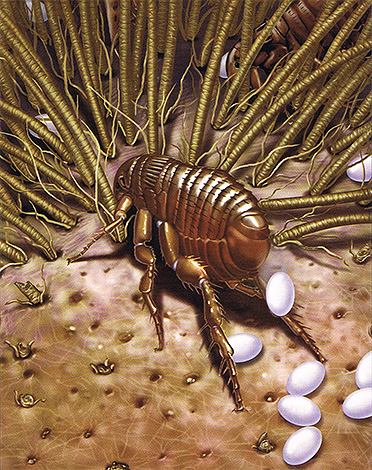
Starting the fight against fleas in an apartment or with pets, it is important to understand that fleas reproduce quickly, efficiently and at the same time are very unpretentious to environmental conditions. They are insects with complete metamorphosis. This means that the flea larva emerging from the egg is very different from the adult insect both externally and in its way of life, way of feeding and behavior.
This type of insect development has certain evolutionary advantages: due to the fact that larvae and adults eat different foods and live in different places, they do not compete with each other for food and therefore have a better chance of surviving.
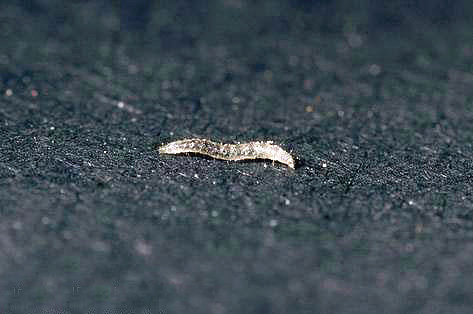

On a note
The type of reproduction similar to the flea is also characteristic of butterflies, beetles, mosquitoes with flies, wasps and ants. Everyone knows how different a caterpillar is from a butterfly. The differences between the adult flea and its larva are approximately the same.
A different type of development is demonstrated by cockroaches, grasshoppers, bedbugs and dragonflies. Their larvae, called nymphs, are quite similar to adult insects, and in many cases live with them and feed on the same food.Such development has its advantages in terms of access to a large amount of food - the same cockroaches in the rainforest, by feeding all individuals with the same food, can simultaneously "master" a large amount of decaying organic debris.

The breeding process of fleas is almost always hidden from pet owners, and for a person without special knowledge and attempts to observe it, it goes completely unnoticed. However, the numerous nuances that accompany such reproduction of parasites are very curious to talk about them in more detail.
Important!
It would be wrong to say that fleas breed in cats or dogs. Flea reproduction is generally not tied to host animals or even humans. All parasites need from mammals is blood. Having eaten, they go to continue the race in more calm and secluded places.
Thus, fleas do not live on cats, dogs and other animals: parasites only temporarily jump on them to feed.
A bit of biology: from egg to adult parasite
The female flea mates after a very short time after leaving the pupa. Mating can take place both on the animal itself and in its hole, on the litter, in any secluded place where two individuals of different sexes will find each other. After that, the female needs to feed on the host's blood at least once so that the eggs in her body begin to develop.
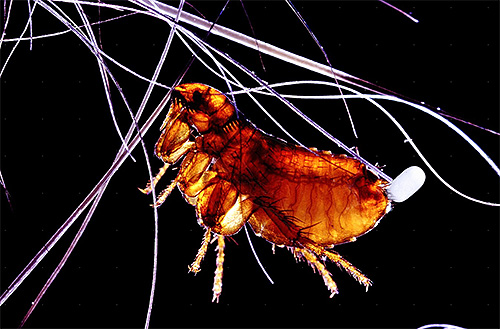
Fleas in cats and dogs breed near places where animals rest, near their toilet. Sometimes female fleas even lay eggs on the pet's fur, and after that the eggs fall off in different places on the floor.
It is interesting
A flea can starve without prejudice to itself for several months.However, the female will not lay a single egg during such a hunger strike.
Eggs mature in the body of a flea in portions - 4-5 pieces (up to 15) after each feeding. After that, the flea, wherever it finds itself, even on the fur of an animal, literally shoots eggs from its body so that they scatter a sufficient distance. This is a kind of guarantee that the larvae will live far apart and will not compete for food, as well as a guarantee that at least some of them will be able to find shelter and food at all.
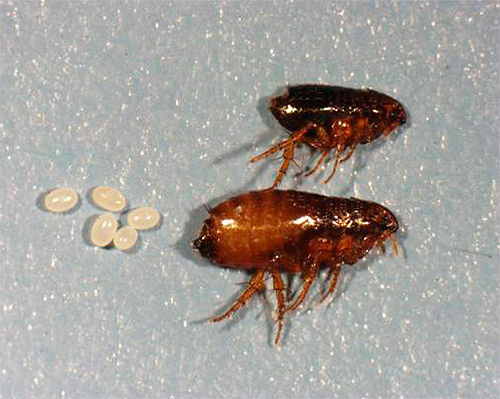
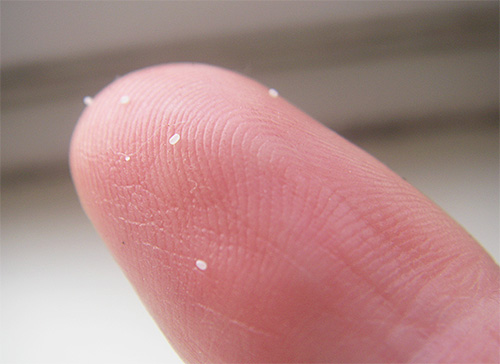
Flea eggs are small in size - up to 0.5 mm in diameter, white, almost invisible to the naked eye even on a dark surface. They develop for at least two days (at elevated temperatures), and under normal conditions - about two weeks.
It is interesting
The optimal conditions for the development of fleas parasitizing on domestic animals are a temperature of about 23-25 ° C and a humidity of about 60%. When the temperature drops, they can experience a decrease in humidity, and, conversely, when warming, they easily tolerate excess moisture.
On the contrary, at high temperatures and dry air, eggs and larvae dry out, and in cold, moist air they die from hypothermia. At high humidity and high temperature, fleas reproduce at the highest rate. However, they tend to be larger on average.
Difficult conditions - frosts, drought - are usually experienced by flea pupae. In this case, the entire breeding cycle of fleas can stretch for several months, and sometimes up to one and a half years.
Flea eggs hatch into larvae that look like translucent white worms.At first they are quite small - about a millimeter in length - but as they grow, they molt three times and at the last stage reach 4-5 mm. At this time, the esophagus is visible in their body, filled with their main food - organic residues, pieces of skin of host animals, excrement of adult fleas containing undigested blood.
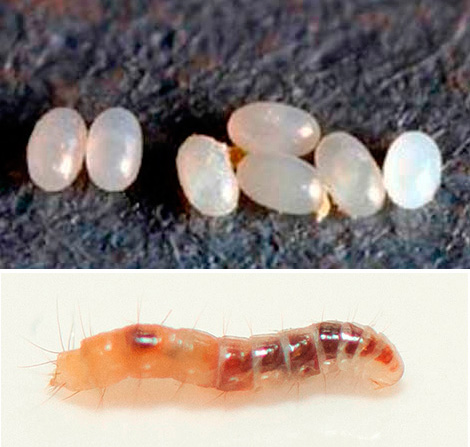
After three to four weeks (at least 7-8 days), the larva wraps itself in a thin silk cocoon and turns into a chrysalis. In this form, it does not feed, does not move, breathes little and can survive strong changes in temperature and humidity, lack of a food source.
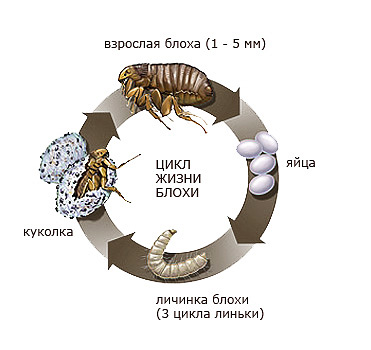
It is interesting
An adult flea can briefly withstand a drop in air temperature around it to minus 40°C. The pupa is also stable, but the eggs and larvae die already at near-zero temperatures and in light frost.
At the pupal stage, the insect stays from 5 days to a year, depending on conditions. In the tropics and apartments, adult fleas emerge from pupae very quickly. When insects reproduce in the nests of birds and animals in temperate and northern latitudes, those pupae that ended up in the nest after the owners left it will languish in this form until the next year, when the inhabitants reappear in the shelter.
A special scientific video shows in detail how fleas reproduce and how insects develop at all stages. Fleas in cats and dogs reproduce in this way, regardless of the specific species.
How fleas breed - full cycle
How fast do fleas reproduce?
In general, we can say that fleas reproduce very quickly.Under certain conditions, the cycle during which a larva hatches from an egg, molts three times, turns into a pupa, an adult comes out of it, mates and lays a new clutch (the so-called “from egg to egg” cycle) takes 9-10 days.

Simply put, generational change occurs in fleas for a little more than one week. But this is a rather rare case. More often, under normal apartment conditions, under a cat's bedding (or in a fox or ground squirrel's burrow in nature), fleas experience such a cycle in three to four weeks.
Generally speaking, it is in apartments or in utility rooms that maintain a comfortable temperature all year round that fleas breed most quickly.
Exotic fleas, exotic breeding
Different types of fleas are known for the specific details of their reproduction.
So, the female sand flea, common on the beaches of India and the Caribbean, bites into the skin of its victim and sticks to a blood vessel. For several days of constant nutrition, her body swells to the size of a pea. But this is not a reservoir of blood. This is a large set of eggs that develop as long as the insect has a food source.
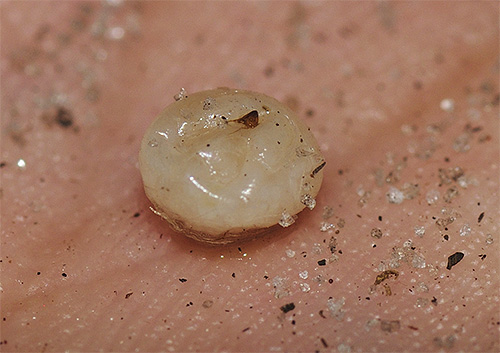
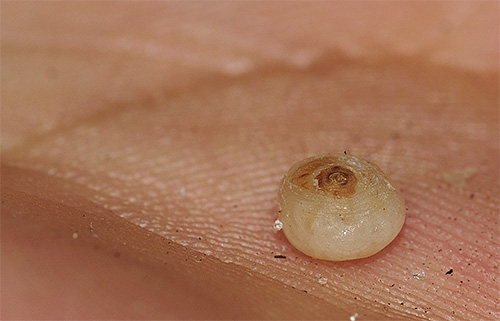
A few days later, all the eggs are thrown out by the sand flea from the wound, and she herself either dies or leaves the victim. In a person or animal, inflammation develops in the place where the flea is attached, the victim experiences very severe pain. Sometimes, as a result of repeated attacks, people develop gangrene.
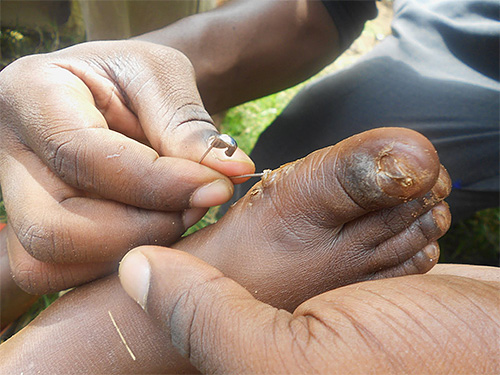
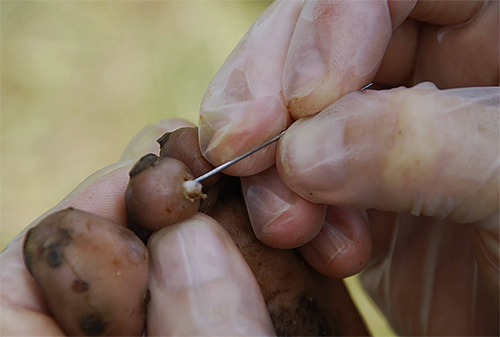
And the Alakurt flea, which lives in the Tien Shan in the wool of sheep, by the time of laying eggs, swells up to 7 mm in length and becomes like a striped worm.Local shepherds call it that - "motley worm". There are cases of sheep dying to death with a serious infection with Alakurt.
Fleas, a cat and an apartment: flea breeding in these conditions
Fleas in an apartment breed in places where they are safest. Usually their larvae develop behind skirting boards, under furniture, in bins, closets in which garbage or dirt accumulates, in bedding in places where cats rest, under parquet.
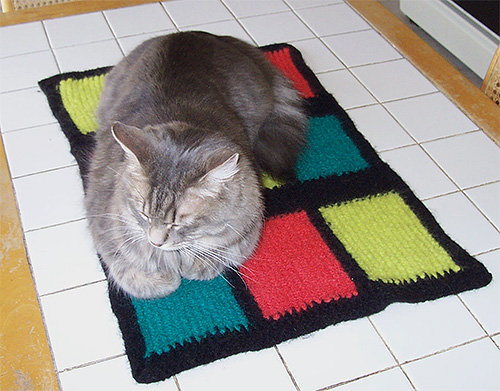
In private homes, flea larvae can develop right under the house on the street, and fleas come to feed in the house.
Knowing these features of fleas, when exterminating them, it is necessary:
- carefully treat floors, carpets, beds for dogs and cats, parquet, baseboards, shelves in closets with insecticidal preparations;
- especially diligently carry out wet cleaning, and it is desirable not only after flea persecution, but every week in general - this is how most of the younger generation of parasites will be removed from the apartment with garbage;
- repeat the insecticide treatment of the premises two weeks after the first persecution - this will destroy the fleas that will hatch from the pupae that survived the first persecution.
It is also useful to consider in detail what flea larvae look like, so that if you meet them by chance in or near the house, you can take timely measures and protect yourself and your family from parasites.
Interesting footage: this is what flea larvae look like, swarming in the animal's bedding

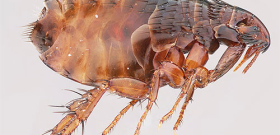
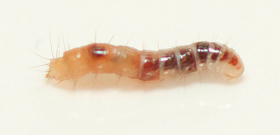

Good article.
Very informative article. We live in our house, the cat has fleas, we can’t get rid of them in any way. They already washed it with a special shampoo, and put on a collar, we don’t let it go outside, but still from time to time we find flea feces on the cat. Now, thanks to your article, the house has been treated with a special tool.
Good article, lots of useful information.
We had a cat, but we removed it, and we cannot get rid of fleas - there are more and more of them. They bite very hard - both me and the child. I'm in a position myself, I don't know what to do. And what is the remedy? What is the name of?